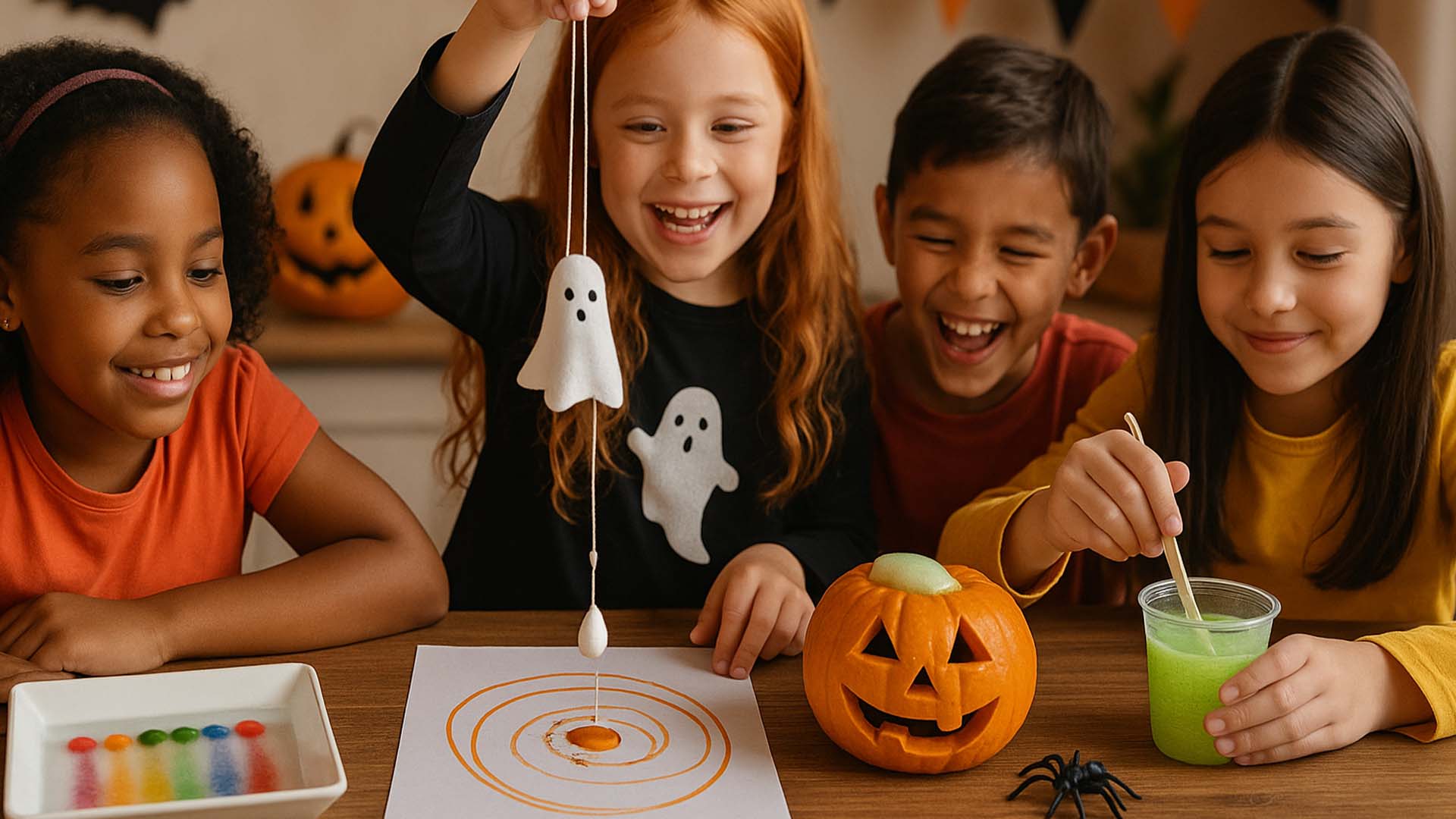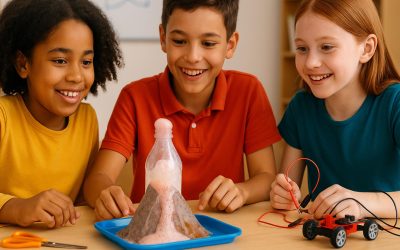Science Buddies, a leader in K–12 STEM education, published 24 Halloween-themed experiments that turn October into a lab of thrills. Whether your child is curious about color separation in candy chromatography or the physics behind a ghost pendulum painting, these projects blend spooky imagery with real-world science sciencebuddies.org.
Experiment Highlights
- Candy Chromatography: Separate dye colors from M&M’s or Skittles to explore molecular solubility.
- Ghostly Pendulum Painting: Swing a paint-filled container over paper to visualize periodic motion.
- Ooze-in-a-Pumpkin: Mix baking soda and vinegar inside a carved pumpkin for a safe, eruptive reaction.
- Glow-in-the-Dark Slime: Use tonic water’s quinine under UV light to make eerie slime.
Educational Benefits
- Hands-On Learning: Engages students in the scientific method—hypothesis, experiment, observation.
- Curriculum Alignment: Supports chemistry (reactions), physics (motion), and biology (fluorescence).
- Family Collaboration: Parents and kids can conduct experiments together, fostering curiosity.
How to Get Started
- Pick Projects by Age: Younger children can assist in mixing; older ones manage measurements.
- Gather Supplies: Most use pantry items—vinegar, baking soda, candy, paper.
- Document Results: Have kids journal observations and draw experiment outcomes.
Conclusion
Science Buddies’ list transforms Halloween from candy-centered fun to a STEM-rich playground. With 24 experiments, every family can find hands-on ways to learn science concepts and enjoy seasonal spooks.
Q&A Section
Q1: Are these experiments safe for home?
A1: Yes—designed for home use with common, non-hazardous materials under adult supervision.
Q2: Do projects require special equipment?
A2: No—most use household items; a UV flashlight can enhance glow-in-the-dark demos.
Sources:
- Science Buddies’ Halloween STEM project roundup sciencebuddies.org








0 Comments